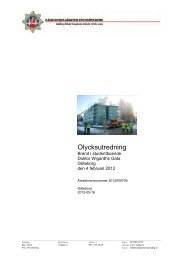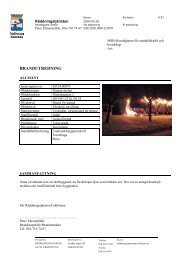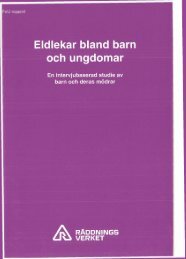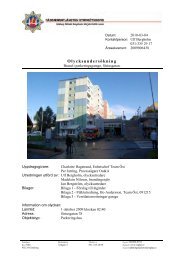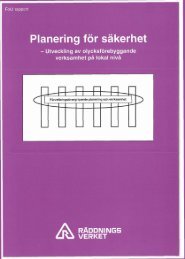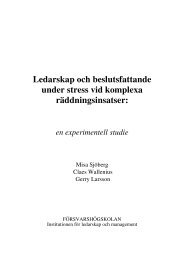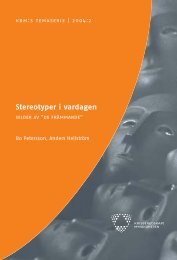You also want an ePaper? Increase the reach of your titles
YUMPU automatically turns print PDFs into web optimized ePapers that Google loves.
There are several reasons why media<br />
work in this way. One is the quest for<br />
more information about the suspected<br />
perpetrator that could provide explanations<br />
for his behaviour. The identity of<br />
the perpetrator and what characterizes<br />
him is both central and relevant. What<br />
personal qualities make him so different<br />
to the rest of us Another reason is that<br />
new details, preferably enticing, create<br />
new angles and articles and raise the<br />
dramatic content of the news stories. 155<br />
The 35-year-old suspect was subject<br />
to far more scrutiny and unfavourable<br />
opinion than the 24-year-old. Some<br />
statements, especially those from<br />
anonymous sources, created an almost<br />
demoniacal picture of a disturbed,<br />
intelligent but egocentric, violent, racist<br />
and unscrupulous individual. There<br />
were some favourable statements, but<br />
not many. American researcher Steven<br />
Chermak claims that the offender plays<br />
an important role in crime reporting’s<br />
narrative framework. He provides the<br />
elements of “evilness” and “wickedness”<br />
that underpin these standardised stories.<br />
He is also the perpetrator of<br />
the crime and his actions constitute<br />
the element of realism in news stories.<br />
Much of the criticism of news<br />
reporting on Anna Lindh’s murder<br />
focused on how the 35-year-old man<br />
was victimized by the media, especially<br />
by single copy newspapers. One reason<br />
why judgements of the 24-year-old<br />
man were considerably fewer may<br />
thus be due to some self-censorship<br />
by media and greater restraint in their<br />
portrayals. Another reason was that the<br />
media did not gain access to as much<br />
information about the 24-year-old<br />
man. Authorities did not release photos<br />
of him, for example.<br />
Through his lawyers, Gunnar Falk<br />
and Martin Särman, the 35-year-old<br />
man submitted a summons application<br />
to the Stockholm City Court in September<br />
2005 against editor-in-chief<br />
Otto Sjöberg and Expressen, the<br />
second largest Swedish single copy<br />
paper. Objections concerned newspaper<br />
reports on the 35-year-old’s<br />
childhood, “social relations, previous<br />
court reports, excerpts from personal<br />
case studies and examinations by forensic<br />
psychiatrists”. 156<br />
Lack of relevance<br />
Speculation plus vague and anonymous<br />
sources in articles and news items are<br />
two indications of lack of relevance.<br />
In the Anna Lindh murder reporting,<br />
10 percent of all sources were vague<br />
or anonymous, and 40 percent of the<br />
items and articles contained speculations.<br />
This does not necessarily mean<br />
that the speculations were unfounded<br />
or that information was false, but they<br />
could have been. As such, the reporting<br />
contained a significant lack of relevance.<br />
There are several reasons why journalism<br />
resorts to speculation. One is<br />
that reliable and confirmed informa-<br />
155. Chermak 1995.<br />
156. Pressens Tidning 6/06<br />
138 | mördare <strong>och</strong> <strong>poliser</strong>





